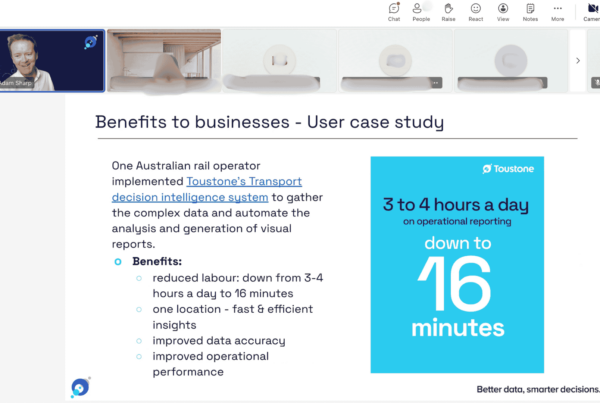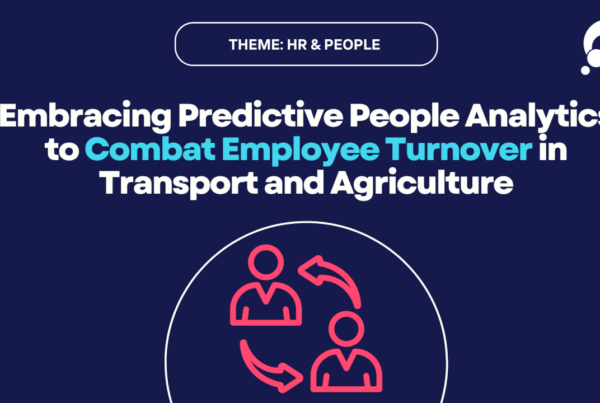Data and artificial intelligence (AI) have taken on massive roles in managing the aftermath of the Covid-19 crisis. What does this mean for data and analytics as we prepare to face a post-pandemic reset? To help you get ready for what’s coming next, we’ve selected five of Gartner’s Top Trends for 2020 to identify areas to focus on:
- Smarter, faster, more responsible AI
- The decline of the dashboard
- Decision Intelligence
- The Cloud is a given
- Data marketplaces and exchanges
1. Smarter, faster, more responsible AI
Gartner predicts that by the end of 2024, 75% of enterprises will have made the move to operationalising AI. No more development and control – it’s time to rely on the technology.
Machine learning and natural language processing deliver vital insights and predictions, so increasing investment in these aspects of AI technology is key. Human-machine collaboration and trust will be enhanced by model transparency – if you see it, you can believe it – driving efficient decisions.
AI technology is available to you now. Yellowfin Signals monitors and analyzes your data and notifies you of significant events. The relationship created between user and technology allows for faster and more effective decisions. Steering toward a reliance on AI now will help you make better decisions in a post-pandemic world.
Implementing AI on top of a foundation of reliable data is the next step to keeping pace with rapid and informed insights. Are you ready?
2. The decline of the dashboard
The second trend we pulled from the Gartner report to help you prepare for the unprecedented shift we are experiencing in the wake of Covid-19 is the decline of the dashboard.
If you just got used to dashboard reporting, don’t worry. It’s not going away, it’s just getting better.
While dashboards revolutionised the way we view data, the standard point-and-click exploration of predefined dashboards will shift to the next level – automated delivery of insights in an easy-to-understand format.
Data reports will be replaced with data stories. It goes a step beyond reporting as the insights are generated for you. And you don’t have to be a data scientist to understand a story. This saves an incredible amount of time that would have been spent on analysis.
So who sees the stories? A few weeks ago I mentioned sharing your data with the right people was a key step in getting the most out of your data. Automated insights builds on that as relevant data stories stream to each user based on their context, role or use.
The right people get the right data pre-packaged as insights. Their job then becomes acting on those insights, instead of developing them – and more time spent on action yields faster results.
3. Decision Intelligence
The third trend has to do with Decision Intelligence. Gartner predicts that 33% of larger organisations will be practising a higher level of decision intelligence by 2023.
What does this mean? Faster, better decisions based on data, including automated decision management and modelling technology.
Decision Intelligence brings together several disciplines to give a framework for making high-level decisions using multiple logical and mathematical techniques. Automating this process – or at the least, documenting and auditing – allows for faster execution, monitoring and analysis of AI and ML supported decisions.
In this way, data-based decision-making swiftly drives the business processes and the processes are monitored to keep in line with the business strategy. The result? Better outcomes for the business.
While machine learning drives better decisions, it still requires a human aspect to be the decision-maker by initiating the actions based on decisions. By exploring Decision Intelligence now your team can remain ahead of the game in the uncertain days ahead.

4. The Cloud is a given
Remember dial-up internet? It’s hard to imagine where the world would be if we hadn’t progressed from those days.
Soon we’ll be saying, “Remember life before the cloud?”
By 2022, the cloud will be essential for 90% of data and analytics innovation, according to Gartner’s latest trends. As data and AI take on more of a role in the unprecedented times we are living in, the speed of cloud services will be necessary to stay competitive.
We currently see companies benefit from cloud services with increased efficiency, security and clarity. Data can be automated and scalable. Increasing data storage with manual housing can take 6-9 months, while with the cloud it takes mere seconds. Building your data foundation in the cloud drives efficiency in reporting, so you can spend more time acting on insights instead of building them.
The good news is that you can shift to the cloud in seconds with Toustone proven technology partnered with AWS. We’re experts at getting the most out of your #data, so we can guide you from step one to get your organisation up to speed. We make the transition easy so you can focus on what’s ahead while the pre-cloud days become a hazy memory.
Have you adopted the cloud? Check out our Hosting Solution!
5. Data Marketplaces and Exchanges
Picture a marketplace – a collection of stalls selling everything from food to clothing to handmade goods. It’s convenient for both buyers and sellers, bringing goods to one location keeps costs low and makes it easy for buyers to see what’s available.
A data marketplace has similar advantages – bringing together multiple buyers and sellers of data in one cloud-based location reduces costs and showcases everything available.
Number five in our Top 5 Gartner Trends is a shift toward data marketplaces. In two years, 35% of large organisations will be either sellers or buyers of data from online data marketplaces. As more businesses monetise their data, the amount of available data grows exponentially.
The availability of third-party datasets can be a boon to businesses by providing centralised access to multiple providers on one platform and reducing costs. The improved insights drive real results.
But before you dive in, make sure you know how to combine your internal data warehouse with these outside data sources. It’s a powerful force for driving insights but you have to maintain your focus and not get distracted by extra data – there’s a lot of it out there.
Are you ready to take advantage of third-party data to improve your insights?



